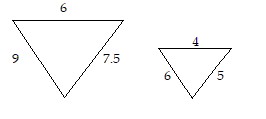The statement  illustrates the __________ (commutative or associative or distributive) property of multiplication.
illustrates the __________ (commutative or associative or distributive) property of multiplication.
Fill in the blank(s) with the appropriate word(s).
commutative
You might also like to view...
Use the theoretical probability formula to solve the problem. Express the probability as a fraction reduced to lowest terms.A single die is rolled twice. The set of 36 equally likely outcomes is {(1, 1), (1, 2), (1, 3), (1, 4), (1, 5), (1, 6), (2, 1), (2, 2), (2, 3), (2, 4), (2, 5), (2, 6), (3, 1), (3, 2), (3, 3), (3, 4), (3, 5), (3, 6), (4, 1), (4, 2), (4, 3), (4, 4), (4, 5),  (5, 1),
(5, 1),  (5, 3), (5, 4), (5, 5), (5, 6), (6, 1), (6, 2), (6, 3), (6, 4), (6, 5), (6, 6),}. Find the probability of getting two numbers whose sum is less than 13.
(5, 3), (5, 4), (5, 5), (5, 6), (6, 1), (6, 2), (6, 3), (6, 4), (6, 5), (6, 6),}. Find the probability of getting two numbers whose sum is less than 13.
A. 
B. 0
C. 1
D. 
Find the ratio of the corresponding sides of the given similar triangles.
A. 
B. 
C. 
D. 
Solve.The circle has a radius of 9y centimeters. Find its area. Do not approximate ?. 

A. 18y2? sq cm B. 18y? sq cm C. 81y2? sq cm D. 81y? sq cm
Evaluate using the order of operations.-3.5 + 4.1 - 4.7 - (-2.3) + 2.0
A. 5 B. -7.2 C. -4.4 D. 0.2